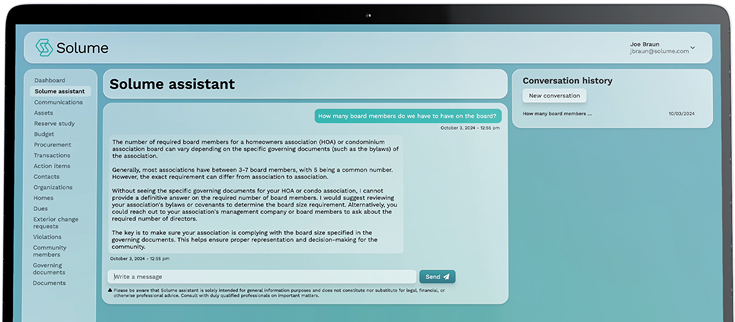If you’ve ever served on an HOA or Condo Association board, you know this truth: no matter how well things run, someone will always have a complaint. But what if most of those complaints were avoidable—not through perfection, but through proactive communication and community care?
The reality is, most HOA frustrations don’t stem from decisions themselves, but from how those decisions are communicated, implemented, and received. Homeowners don’t just want rules and updates—they want to be included, heard, and respected.
Let’s explore how you can turn your HOA from a complaint magnet into a model of transparency, trust, and connection.
1. Keep Homeowners in the Loop—Before They Have to Ask
One of the biggest drivers of HOA conflict is simply this: people feel out of the loop. When communication is sparse, unclear, or overly technical, residents start to make assumptions—and rarely the good kind.
Make Communication a Strategic Priority
Think of communication not as a side task, but as a core service your board provides. When residents understand what’s happening and why, they’re far more likely to trust the process—even if they don’t agree with every outcome.
Here’s what consistent, clear communication looks like:
- ✔ Board Decision Highlights: Explain what was decided and why—in plain language.
- ✔ Project Updates: Share timelines, setbacks, and completions regularly.
- ✔ Community Wins: Celebrate clean-ups, events, or successful maintenance projects.
Summarize Meetings (Simply)
Don’t make residents dig through lengthy minutes. Send out a short, digestible post-meeting summary. Keep it focused on decisions, next steps, and upcoming actions.
Don’t Just Enforce—Encourage
It’s easy to default to compliance mode, but your communication is a chance to cultivate community. Share photos of completed projects. Highlight resident volunteers. The more homeowners see action and positivity, the more goodwill you build.
2. Open the Door for Real Dialogue
Transparent updates are powerful—but they’re only half of the equation. The other half? Giving homeowners a real voice.
Create Safe Spaces to Be Heard
Some concerns just need a human moment. Consider:
- 💬 Quarterly Town Halls: Invite dialogue, not just lectures.
- 💻 Online Feedback Forums: Let residents ask questions or share ideas at their convenience.
Use Anonymous Tools
Some folks won't speak up in public, but they still have something important to say. Use online surveys or anonymous suggestion boxes to surface hidden insights and concerns.
Respond Promptly and Personally
When a complaint does surface, don’t let it linger. A quick response—even if just to say, “We’re looking into it, here’s the timeline”—can de-escalate 90% of tension. Most people don’t expect perfection—they expect to be acknowledged.
3. Remove the Guesswork
Confusion breeds conflict. If homeowners don’t know where to find key info or aren’t clear on community guidelines, friction becomes inevitable.
Build an Accessible Info Hub
All essential documents, policies, updates, and contact details should live in one central place. And ideally, it should be:
- 📁 Easy to navigate
- 🔎 Searchable
- 📱 Accessible on mobile
Enter Solume Assistant
With Solume, homeowners can ask questions directly—from “Can I paint my fence red?” to “When is the pool reopening?”—and get accurate, instant answers. No digging, no guesswork.
This kind of clarity doesn’t just save the board time. It prevents conflict before it begins.
Be Honest About Timelines
The quickest way to create frustration? Overpromise, then underdeliver. Be upfront about how long projects or approvals may take—and keep folks in the loop if things change.
Visuals Go a Long Way
Don’t just say “we’re working on it”—show the progress. A project timeline or progress bar can do wonders to ease concerns and keep expectations aligned.
4. Create a Culture, Not Just a Committee
Great HOAs aren’t just well-run—they’re well-connected. Residents who feel engaged and respected are far less likely to resort to formal complaints.
Here’s how to build a culture of trust:
- 🤝 Lead by Example: Board members set the tone. Be visible, responsive, and inclusive.
- 🌟 Recognize Contributions: Acknowledge residents who volunteer or go above and beyond.
- 🧭 Educate New Homeowners: Host welcome sessions or send out a quick-start guide to help newcomers navigate community life.
- 🔄 Review What’s Working: Take stock regularly. What communication channels get traction? What issues come up repeatedly? Use that data to improve.
The Bottom Line: Proactive Beats Reactive
The best-run communities don’t eliminate every issue—they create systems that reduce confusion, build trust, and strengthen connection.
Let’s recap:
- 📨 Proactive updates = fewer surprises
- 🗣️ Real dialogue = fewer escalations
- 📚 Accessible info = fewer misunderstandings
- ❤️ Stronger relationships = a more resilient, respectful community
When people feel informed, included, and respected, complaints don’t just drop—they often never arise in the first place.


